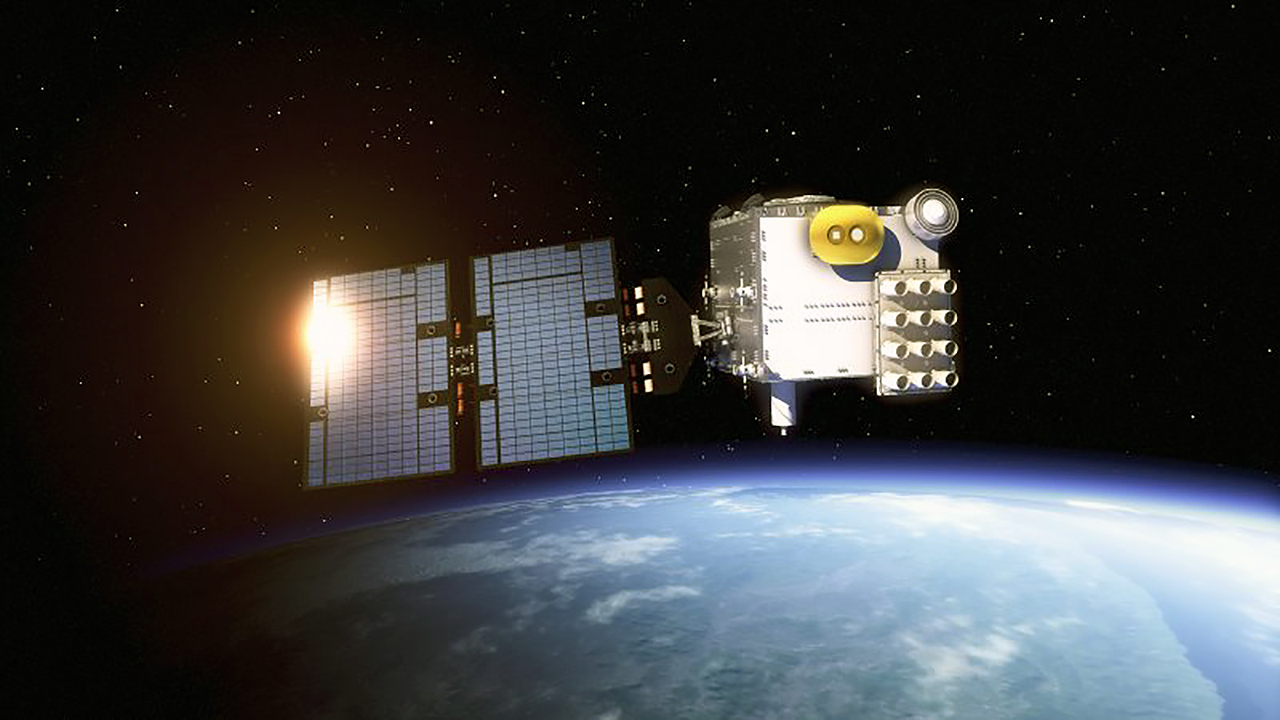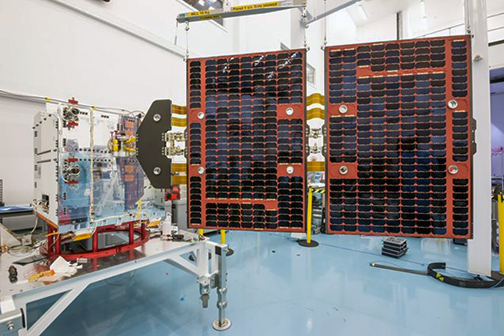
The successful launch on June 24, 2019 ,EST of six satellites for the FORMOSAT-7 joint US-Taiwanese weather forecasting constellation marks the start of another SSTL-enabled space mission.
The launch on the SpaceX Falcon Heavy rocket from the Kennedy Space Centre was attended by SSTL staff including Managing Director, Sarah Parker, who said the company is proud of their role as space mission enablers and, hot on the heels of TeleSat LEO Phase 1 satellites’ first ever demo of 5G connectivity, SSTL is delighted that the firm’s smallsats expertise has — once again — helped the firm’s customers achieve their ambitions.

The company congratulates their customers, NSPO in Taiwan, and NOAA in the United States, on the successful launch of their constellation and look forward to following their mission journey as they move through commissioning and into start of operations.

Artistic rendition of the Fomosat-7 smallsat.
Image is courtesy of SSTL.
FORMOSAT-7, also known as COSMIC-2 in the U.S., is a joint constellation meteorological satellite mission between Taiwan and the United States for observing and monitoring the global meteorology, climate, and ionosphere. In addition to two science payloads for detecting ionospheric data, each of the six satellites in the constellation is carrying an advanced GNSS receiver to low-inclination-angle orbits and will collect atmospheric data at low and mid latitudes to provide sounding data to improve regional and global weather forecasting. The processed data will be provided by two data processing centers located in Taiwan and USA.

Photo of Formosat-7 smallsat with the solar panel deployed.
Image is courtesy of SSTL.
SSTL provided the platforms for this next-generation Global Navigational Satellite System Radio Occultation data constellation, enabling our customer, NSPO of Taiwan, to continue its participation in an internationally recognised science mission at the best possible value for money. Collaborating with SSTL also enabled NSPO’s engineers to work hand-in-hand with SSTL’s engineering team throughout the program, gaining world-class small satellite expertise in the full range of satellite mission capability including design, assembly, test and in-orbit operations.
As a continuation of this program, NSPO is now developing their own FORMOSAT-7 platform, named TRITON, using some of SSTL’s hardware under license in their own satellite structure and avionics. The satellite is scheduled for launch in 2021.
The first fully integrated and tested satellite for the FORMOSAT-7 constellation was completed at SSTL in the UK and delivered to NSPO in Taiwan in 2015. The other five satellites in the constellation were manufactured and assembled by SSTL in the UK and delivered to Taiwan where payload assembly and testing was completed at NSPO’s facility as part of the knowledge transfer program.
The payloads for the satellites were provided by NASA (JPL), the U.S. Air Force and the University of Texas and were integrated to the completed platforms by the NSPO team, with support from SSTL. SSTL engineers also provided launch site support and are providing technical on-orbit operational support to NSPO’s team who will be performing on-orbit commissioning of the spacecraft from the company’s control center in Taiwan.
The launch of the FORMOSAT-7 satellites was managed by the U.S. Air Force STP-2 program.

